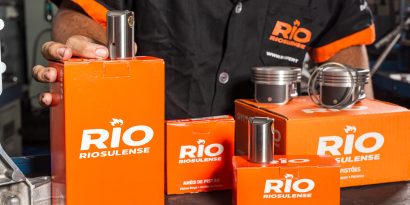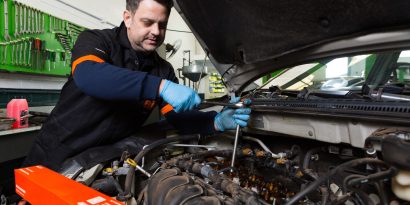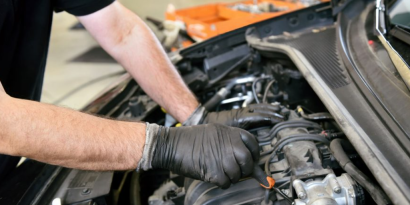With the evolution of modern engines, every internal component plays a essential role in ensuring efficient, safe, and cost-effective vehicle operation. Among these components, the valve springs stands out for its fundamental performance in controlling the flow of air and exhaust gases within the engine. Proper maintenance of this part can be decisive for the engine’s lifespan and the owner’s savings.
In this article, you’ll learn about essential valve spring care, warning signs of wear, the risks of neglecting maintenance, and how the right practices directly impact your vehicle’s performance.
Why are valve springs so important?
The valve spring is responsible for ensuring the engine’s valves close at the right moments within the combustion cycle. In other words, it helps properly seal the intake and exhaust passages, allowing the air-fuel mixture in and the burnt gases out. Efficient sealing prevents compression loss, keeps the engine running smoothly, and promotes optimal energy combustion and release.
When the engine operates at high RPMs, it’s the precise pressure of the spring that prevents a phenomenon known as “valve float.” As springs lose elasticity over time, sealing becomes ineffective: fuel and gases leak, causing power loss, increased fuel consumption, and potential irreversible damage to the assembly.
Main causes of valve spring failure
Several factors accelerate the wear of valve springs:
- Constant cycles of flexion and compression.
- Intense temperature changes, especially in engines running under severe conditions.
- Excessive vibrations.
- Contamination by debris or corrosion caused by improper fluids.
All these factors can lead to material fatigue, loss of return strength, or even spring breakage.
Symptoms indicating valve spring wear or failure
Throughout an engine’s lifespan, valve springs undergo millions of work cycles, which naturally leads to material fatigue. Here are the main warning signs:
- Loss of Power and Increased Fuel Consumption: The engine starts running irregularly, “misfiring,” and performing below normal.
- Unusual Metal Noises: Noises coming from the cylinder head may indicate clearance caused by weakened springs.
- Abnormal Valve Heating: Weakened springs compromise sealing, leading to component overheating.
- Idle Issues and Difficulty Starting: When the valve doesn’t fully close, compression is lost and the engine may “ping” or struggle to start.
Whenever you spot these symptoms, it’s a sign that inspecting the valve springs should be a priority.
How and when to replace valve springs
Valve springs rarely show visible defects such as cracks or deformations. Wear is mostly identified using specific tools that measure spring pressure in service. Specialized workshops use spring dynamometers to check if the pressure matches the manufacturer’s specifications.
Generally, manufacturers recommend inspecting or even replacing springs during major overhauls (like cylinder head reconditioning) or when the vehicle exceeds 100,000 kilometers. For engines that frequently operate at high RPMs or under harsh conditions, this analysis should be performed at shorter intervals.
It’s important to note that replacing a spring with higher-than-specified pressure is just as harmful as using a weakened one, as it overloads the system and accelerates wear on the camshaft, lifters, and other valve train components.
Watch this expert clip with our technical consultant Jairo, where we discuss when to replace valve springs in a live session for a deeper understanding.
Frequently asked questions about valve springs and their maintenance
1. Can I keep driving with worn valve springs?
It is not advisable. Worn valve springs compromise valve closure, causing power loss and potentially severe engine damage.
2. Do I need to replace springs every time I change the valves?
Not necessarily, but it’s essential to measure spring pressure. If it’s below recommended levels, replacement is needed to ensure effective sealing.
3. Is it easy to identify problems with a visual inspection?
In most cases, issues aren’t noticeable visually. Correct assessment relies on specialized spring pressure measurement tools.
4. What risks do I run if I delay spring replacement?
Delaying replacement can result in burnt valves, damaged seats, faulty sealing, and even engine overheating.
5. Do aftermarket springs offer the same performance as OEM parts?
The origin of the springs directly impacts performance. Components produced by market leaders like RIO undergo rigorous testing, ensuring performance, safety, and durability.
Value your engine, choose RIO quality
Keeping your engine running perfectly depends on reliable components and consistent maintenance. If you want safety and high performance, choose valve springs backed by RIO’s technology, precision, and tradition.
For decades, RIO has stood out in automotive solution development, manufacturing parts that keep thousands of engines running reliably—from light and heavy vehicles to agricultural machines, rail equipment, and more.
Visit our website to discover our full portfolio of valve springs and other essential components—and ensure every engine cycle delivers efficiency, durability, and peace of mind to your daily routine!





